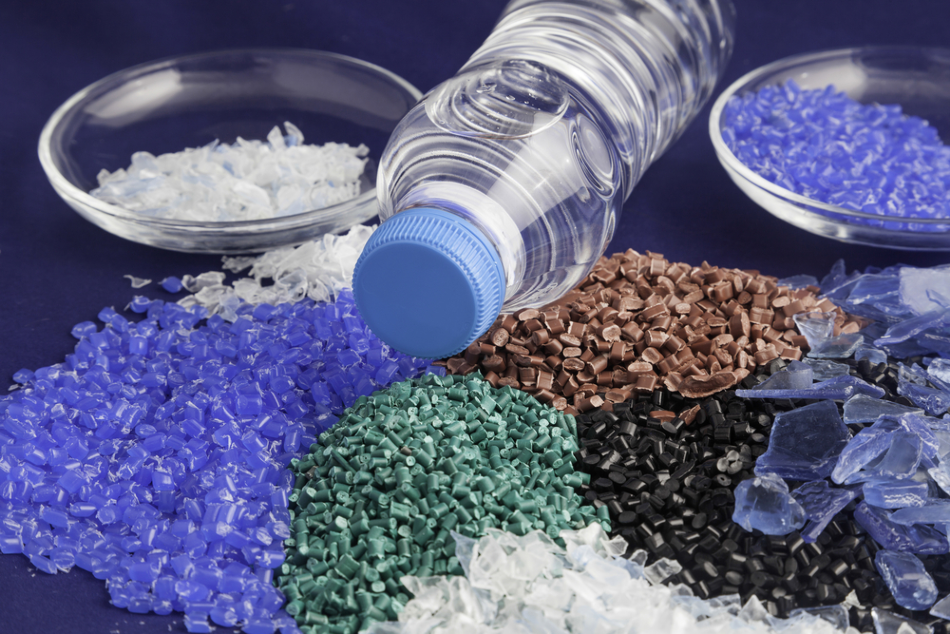
Image Credit: Aykut Erdogdu/Shutterstock.com
A team of scientists at North Carolina State University has recently demonstrated how low-energy, visible light can turn pure monomer solutions into polymer gel objects. This advancement in polymer production will likely prove significant in advancing the sector, given the current challenges of producing polymer materials. The work conducted in North Carolina also highlights the potential value of exploring how low energy photons can be combined to generate high energy states and how this could be used.
Using UV Light to Create Polymers
Polymers are an essential material in the modern world and are found in almost every material used daily.
Polymers are used in clothing, epoxy glue, fiberglass, plastic bags and bottles, polyethylene cups, polymer-based paints, polyurethane foam cushions, silicone heart valves, Teflon-coated cookware, and more. The list of items that polymers help create is extensive and covers products from all industries.
Polymers have also been highlighted as a potentially significant material for advancing the fields of medicine, science, and technology. Biopolymers and therapeutic polymers have begun to emerge, showing the increasing complexity and value of polymer products.Billions of polymer products are currently created each year. Some of these products are created via free radical polymerization, where ultraviolet (UV) light converts monomer solutions into polymers.
The high energy of the wavelength facilitates the necessary reaction for converting the monomer solutions into polymers. While this method is seen as preferable as it produces less chemical waste and has less environmental impact than alternative methods, it still faces significant challenges. The high energy light can have a detrimental effect on the plastics it is being used to create, degrading them, making UV light an unsuitable method for producing certain products.
Creating S2 Excited States
Previous research conducted by Goodnight Innovation Distinguished Chair of Chemistry at NC State, Felix N. Castellano, demonstrated that by combining the excited states of lower energy molecules, it was possible to reach excited states with greater potency.
Following the success of this research, Castellano embarked on a new project, which used a low-energy green and yellow light to apply homomolecular triplet-triplet annihilation to polymer production. The result was the formation of polymer gels from low-energy visible light, overcoming the drawbacks of using UV light.
The method saw the team dissolve zinc(II) meso-tetraphenylporphyrin (ZnTPP) into pure monomers (trimethylolpropane triacrylate (TMPTA) and methyl acrylate (MA)). Following this, the solutions were exposed to yellow light, the energy from which created homomolecular triplets in ZnTPP, which then combined to generate a short-lived S2 excited state. The energy produced by this excited state was enough to polymerize the monomers.
Find out more: Ultraviolet detectors on the market today
Castellano commented that the work conducted at North Carolina State is significant in highlighting the potential of utilizing these extremely short-lived excited states. When combined, the triplets create an excited state that lasts for just picoseconds. However, it is powerful enough to facilitate the reaction that transforms monomers into polymers.
To confirm the production of the S2 excited state following exposure to low energy yellow or green light, the researchers conducted a spectroscopic analysis of the solution. Zinc tetraphenylporphine (ZnTPP) was used to allow researchers to view the light emission from the two distinct excited states, allowing them to differentiate between the state of lower and higher energy. As it is accepted that polymer formation follows the S2 excited state, it was vital to demonstrate this through spectroscopic analysis.
The Impact of Innovating a New Method of Polymer Production
What was achieved by Castellano and his team will have a significant impact not only in applied chemistry but in all industries, given the extensive use and importance of polymer products. The team has demonstrated a brand new method of polymer production that relies on low-energy light sources, overcoming the problems related to using UV light.
In addition to providing an alternative to polymer production via UV light, the method also provides an alternative to other polymerization techniques with significant drawbacks.
The newly established method may open the door to new kinds of polymers with new applications, and will likely have a significant economic and social impact.
This advancement in polymer production will likely be explored further. Additional research in this field is expected to focus on producing polymers that are more easily recycled or biodegradable, given the growing issue of plastic waste and increasingly visible adverse effects of plastic pollution. It is unclear whether this new, low-energy method of polymer production will be developed alongside these environmentally friendly efforts. However, what is clear is that Castellano’s visible light method of polymer production will be widely adopted.
References and Further Reading
Awwad, N., Bui, A., Danilov, E. and Castellano, F., 2020. Visible-Light-Initiated Free-Radical Polymerization by Homomolecular Triplet-Triplet Annihilation. Chem,. https://www.cell.com/chem/fulltext/S2451-9294(20)30429-0?_returnURL=https%3A%2F%2Flinkinghub.elsevier.com%2Fretrieve%2Fpii%2FS2451929420304290%3Fshowall%3Dtrue
Hatti-Kaul, R., Nilsson, L., Zhang, B., Rehnberg, N. and Lundmark, S., 2020. Designing Biobased Recyclable Polymers for Plastics. Trends in Biotechnology, 38(1), pp.50-67. https://www.cell.com/trends/biotechnology/fulltext/S0167-7799(19)30089-7?_returnURL=https%3A%2F%2Flinkinghub.elsevier.com%2Fretrieve%2Fpii%2FS0167779919300897%3Fshowall%3Dtrue
Namazi, H., 2017. Polymers in our daily life. BioImpacts, 7(2), pp.73-74. https://www.ncbi.nlm.nih.gov/pmc/articles/PMC5524987/
New Way to Produce Polymers Using Low-energy Visible Light. Omnexus. Available at: https://omnexus.specialchem.com/news/industry-news/polymer-gel-objects-light-000222712?lr=iom20091971
Disclaimer: The views expressed here are those of the author expressed in their private capacity and do not necessarily represent the views of AZoM.com Limited T/A AZoNetwork the owner and operator of this website. This disclaimer forms part of the Terms and conditions of use of this website.